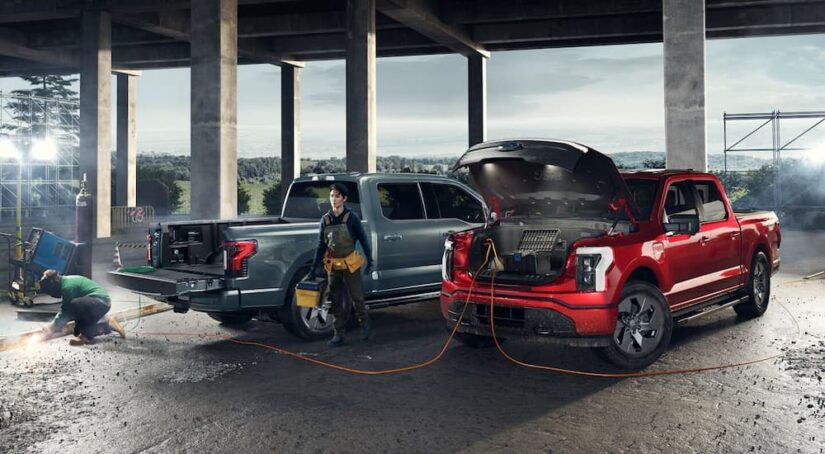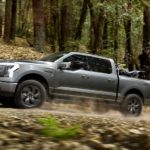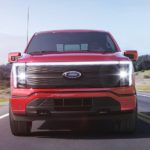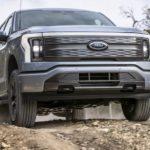Electrification isn’t just for commuters anymore. With climate change becoming a more visible threat around the world and lawmakers from California to the European Union passing laws to speed up the phasing out of the internal combustion engine in passenger vehicles, automakers are stepping up to the challenge and developing all-electric SUVs, cargo vans, and even pickup trucks. While the idea of an EV truck might have seemed far-fetched a decade ago, there are now several automakers with electric pickups in production, and more are planning on getting into the game in the years ahead.
Today, we’re going to take a look at two very different models: the 2024 Ford F-150 Lightning vs 2024 Tesla Cybertruck. Tesla is an upstart looking to move fast and break things, while Ford is an established company with over a century of automotive experience. The stark difference between these two philosophies is clear to anyone taking even a brief glance at the two trucks side-by-side. The F-150 Lightning has some futuristic touches, like light bars up front and in the back, but overall, it looks pretty similar to the gas-powered F-150, which has been the most popular truck in the US for decades now. By contrast, there’s nothing familiar about the Cybertruck’s appearance. It’s so strange-looking that it instantly became fodder for memes when the prototype was unveiled a few years back. Clearly, the F-150 Lightning is a modern take on a classic, while the Cybertruck is a whole new animal.
Which of these models is a better bet for truck drivers looking to go electric? Is Ford too old-school to provide the innovation needed to pair a fully electric powertrain with a hard-working pickup truck? Is Tesla’s Silicon Valley-esque approach too risky for daily drivers to trust? Let’s take a look behind the specs like power and range to find out which of these shiny new EVs is the better bet for drivers looking for a dependable truck.
Establishing a Track Record
Since longevity is a big factor in reliability, it’s hard to say for sure how reliable any all-electric full-size pickup truck is. Hindsight is 20/20, and we’ll have a much better idea of how these models hold up to hard work once they’ve been out on the roads for a while. But while both of these trucks are pretty new, the F-150 Lightning has gotten a lot more real-world experience under its belt than the Cybertruck as of now. The Cybertruck and its controversial design were publicly unveiled back in 2019, and the company planned to make the truck available in late 2021. However, the truck didn’t actually come to market until the 2024 model was released in November of 2023. Maybe it’s a sturdy truck that will stand the test of time, or maybe it won’t last more than a year or two with moderate use; right now, it’s impossible to say.
The Ford F-150 Lightning was first launched back in 2022, which isn’t exactly ancient history. However, it does mean that, as of now, it’s been out on the road for more than twice as long as the Cybertruck. In that time, it’s proven to be a success. If you want proof of that, look no further than the $15,000 price increase between the 2022 and 2024 model years. While Ford cited supply chain issues as the reason for the price hike, you don’t need to be an economist to know that there must have been a fair amount of demand on the other side. However, even with the price increase, the Lightning is still significantly more affordable than the base model of the Cybertruck.
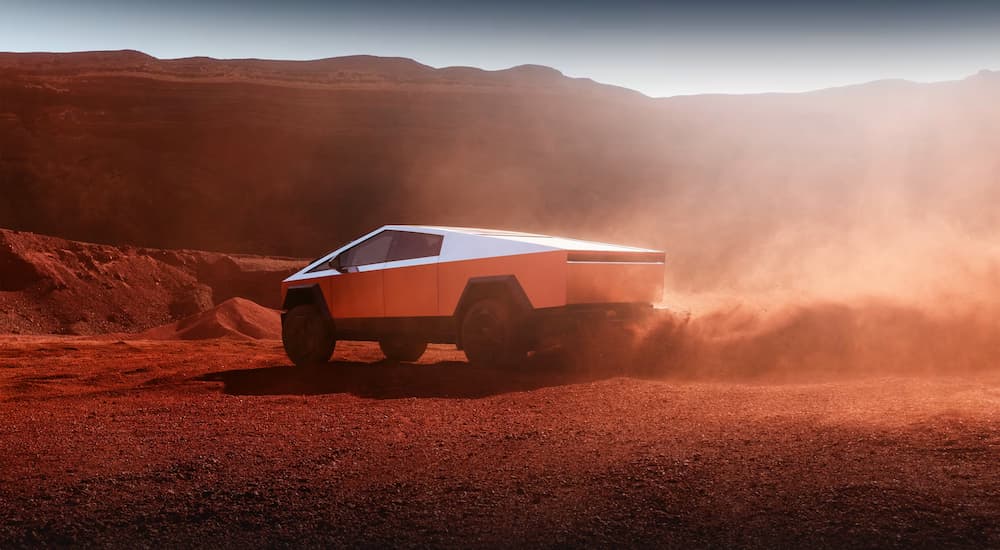
Brand Reputation
Ford has a long history of making vehicles that people can depend on for years and years, and it has a lot of experience making trucks in particular. As mentioned earlier, the F-150 has been the best-selling vehicle in America for over 40 years. The fact that Ford’s truck has been that popular for that long speaks to its quality construction and usefulness for truck drivers. Ford’s success has been a mix of respecting its past and innovating for the future. The F-150 doesn’t constantly change year after year, but it adopts modern styling and new technology and sometimes gets an even bigger makeover. For instance, Ford switched from a steel body to an aluminum-alloy body with a steel frame for the 2015 model of the F-150, making the truck lighter, more efficient, and able to tow more. Decades of experience making the gas-powered versions of the F-150 give Ford a wealth of knowledge to pull from when making the F-150 Lightning.
Tesla, on the other hand, is much newer to the automotive industry and is just now coming out with its first truck. And not only is the company wet behind the ears, but it has had its fair share of controversies during recent years. In 2023, a Reuters investigation discovered that many Tesla vehicles have had serious issues with defects in important systems like suspension and steering but spent years keeping a lid on the problem. Because of the company’s reputation for exaggerating the quality of its vehicles and shoving problems under the rug, we have to take anything it says with a grain of salt. For a clear example, just look at the debut of the Cybertruck back in 2019. Elon Musk wanted to show off the truck’s durability live on stage, so he had Tesla’s chief designer throw a steel ball at the windows. Unexpectedly, the window shattered dramatically. What other claims about the Cybertruck will shatter under pressure? In these early days, it’s hard to say for sure.
Ease of Maintenance
One more big issue with Tesla is the difficulty in accessing reliable service. The company claims that it designs its vehicles “with the goal of eliminating the need for service,” but it has yet to achieve that lofty goal. In the meantime, getting quality service for a Tesla is no easy feat. For one thing, most repairs need to be done by Tesla technicians, so you don’t have many choices when it comes to finding a service center. And the quality of the service centers that do exist can vary wildly. Some are just fine, while others have been reported to the FTC with complaints of vehicles being returned to customers without the issues being fixed at all, stains damaging the exterior, and even a dead mouse found in the trunk. If you rely on your truck for your job, you don’t want to be in a position where a breakdown leaves you powerless.
Ford, on the other hand, has dealerships staffed with certified technicians all across the country (since Tesla refuses to work with independent dealers, it can’t legally operate in all fifty states). The brand’s certification program is more established and ensures that all of its service workers know what they’re doing, resulting in a better baseline of quality throughout various dealerships. If you run into an issue with your F-150 Lightning, it’s easy to get an appointment at your local dealer, and you can count on the service you’ll receive.
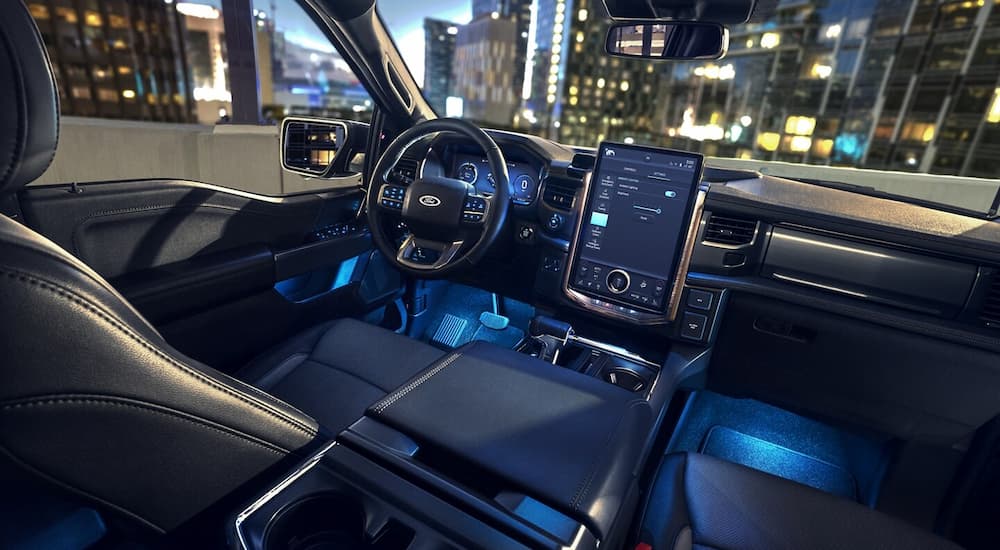
In Terms of Reliability, the Answer Is Clear
Reliability isn’t the only factor important to truck drivers, but it is a big one. If you rely on your truck for work or even for your hobby, then you don’t want to deal with an unexpected breakdown or a software glitch. While things can go wrong with any vehicle, some models are clearly more reliable than others. With Ford’s decades of experience and a sterling reputation for quality, it’s easy to trust the F-150 Lightning, even with important jobs. Tesla, on the other hand, often makes headlines for dangerous defects, exaggerated claims, and disorganization on several levels. While the Cybertruck is flashy, we’ll have to wait and see if there’s anything substantial underneath. Until then, we advise caution.
